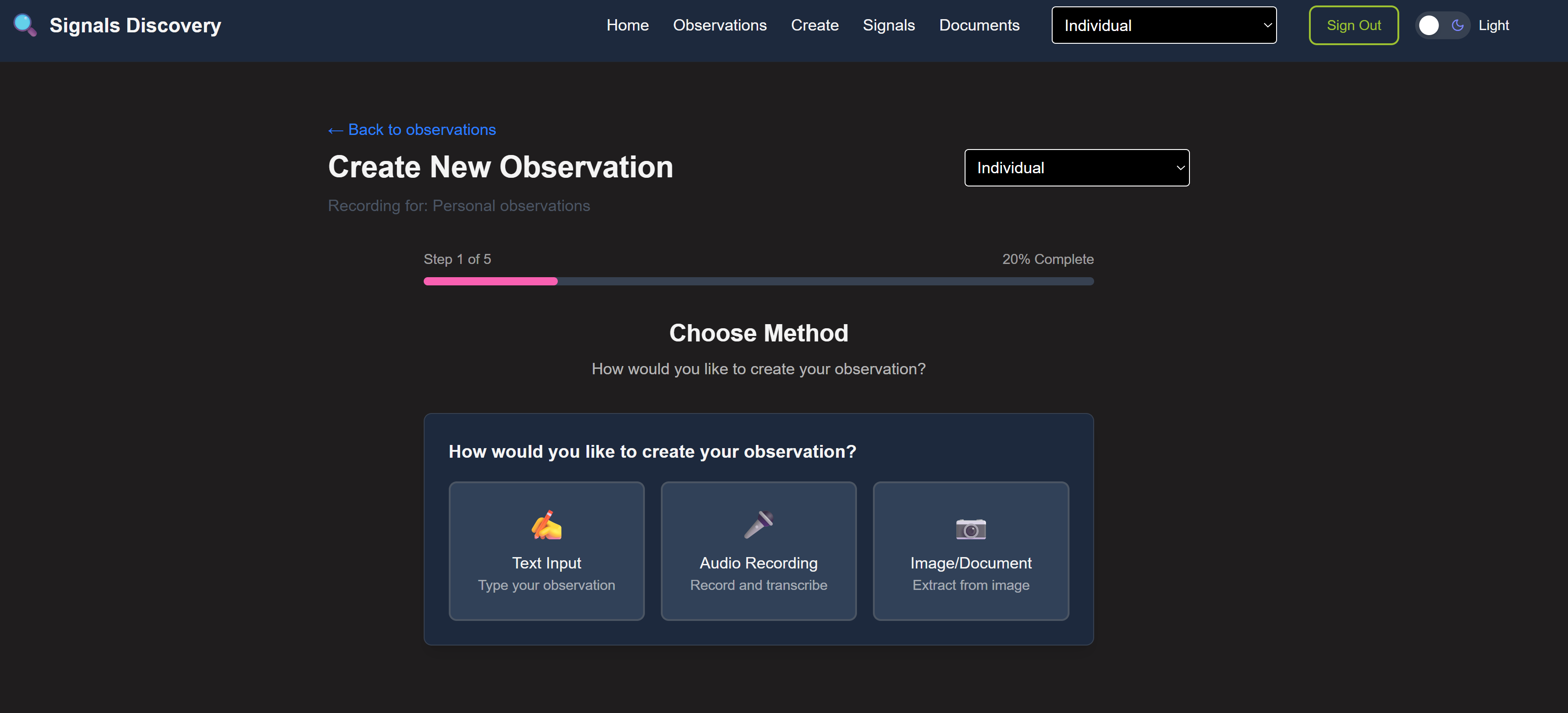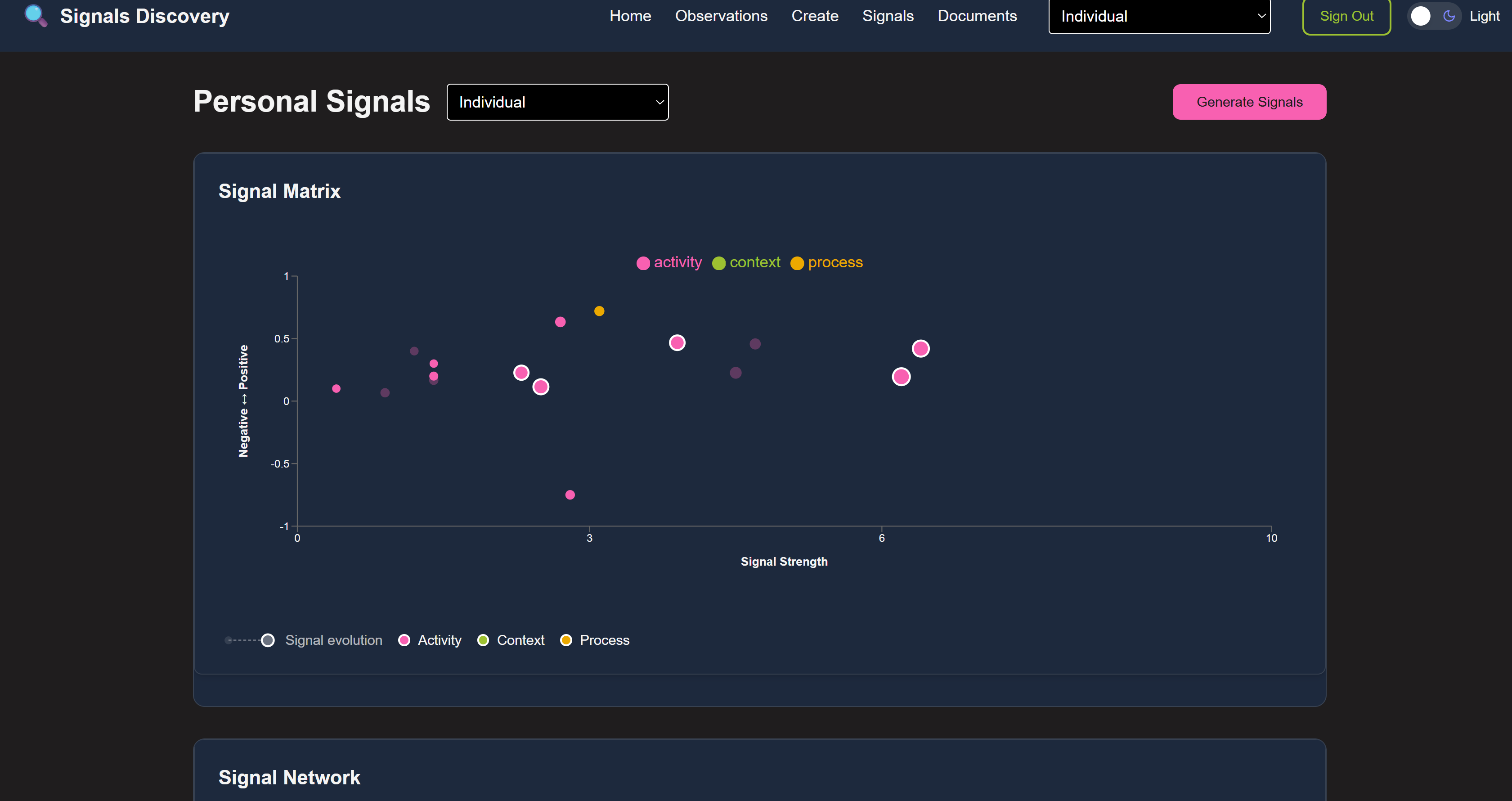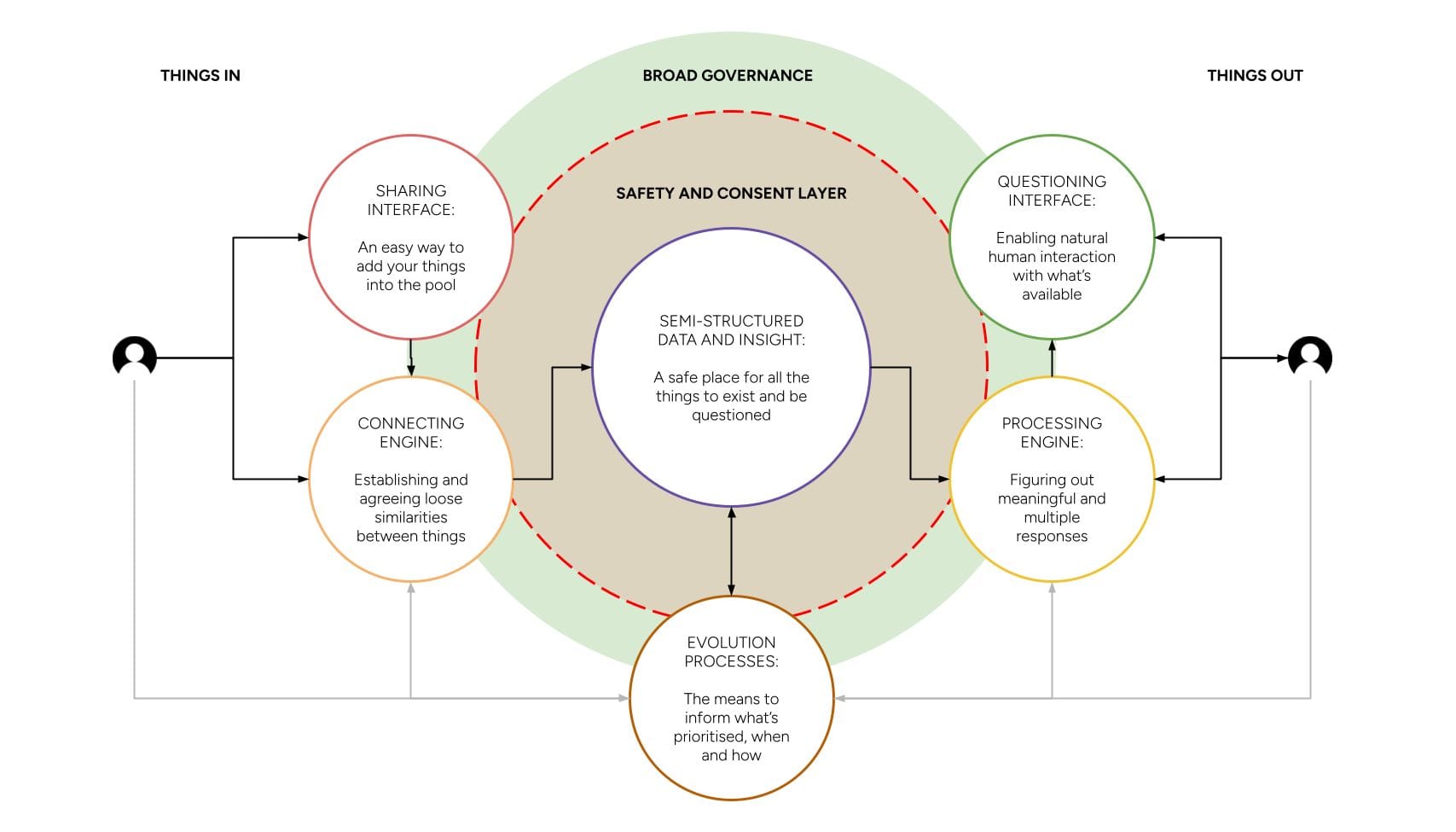Field Notes: Designing Entropic Systems
More on the exploration of what designing with uncertainty and entropy might mean. The Observability Dashboard, The Collective Foundation Model, The Entropic Fund

What follows aren’t blueprints. They’re sketches, prompts, imprints of ideas for how we might begin to build a social purpose infrastructure that lives with uncertainty, instead of fighting it.
Each one is small enough to start tomorrow, some of them have already begun. I’d love you to help shape them or show where they are already happening, so I've dropped this into a document, to maybe create a living field note of what's already out there. Please drop something in if you think it fits. Or even if it doesn't!
1. The Observability Dashboard
Rather than dashboards measure, what about ones that notices.
A dashboard that focuses on surfacing signals, patterns, narratives, tensions all without forcing them into fixed metrics. A shared space where people can add reflections, data points, stories, observations from their work.
We talk about field building and systems change, yet we design tools for the singular, for the linear.
Rather than displaying targets, what if we visualised signals and questions:
- What are we seeing shift?
- What might that mean?
- What don’t we yet understand?
The emphasis is sense-making, not performance. The outcome is collective learning.
But this isn't theoretical I already have a prototype for this.


2a. The Consent Commons
What if Consent wasn't a one-time checkbox but a living contract?
Imagine a digital ledger, governed collectively, that tracks the ongoing consent of contributors and communities. Data is stored, used, or withdrawn dynamically, based on evolving agreements.
Each dataset carries its own consent metadata - who can use this, for what, for how long, and under what changing conditions?
Consent becomes part of the data itself, not paperwork attached to it.
2b. The Plural Interface
Most digital systems are answer-driven. This one starts with questions.
You enter an inquiry not to find the answer, but to explore many.
The interface returns a patchwork of perspectives - quantitative, qualitative, experiential, all visible side by side.
It invites users to travel through difference rather than converge on certainty. Search becomes dialogue.
The combination of consent commons and plural interface is something we at Data For Action with others are already exploring in place.

3. The Collective Foundation Model
AI model(s) trained not on the open internet, but on open relationships.
Built by and for the social sector, this foundation model would learn from community archives, oral histories, reports, and reflections. Its data would be collectively governed and its purpose collective sense-making, not prediction.
Each participating organisation could fine-tune its own local version, while contributing updates back to the shared base.
We aim for Plurality, not uniformity. The model as commons, not product.
4. The Entropic Fund
A funding mechanism that treats uncertainty as a feature.
What if we let go of our egos or that we know what a winning approach is, and design for uncertainty?
Instead of competitive funding rounds, with singular “winning” grants, it funds multiple small prototypes exploring the same question. Or we fund large and long term recognising that to really design with uncertainty means you need to give time and space. And we mix then together, all learning.
I see beginnings of things like this. The Propel fund, a collaborative pooled fund focused on long term conversational funding feels like something like this. The way The A Team and Farming the Future work, relational, learning, uncertain. But I feel we can go further.
What if we designed so that outcomes aren’t scored as success or failure, but mapped as learning vectors?
At intervals, the cohort comes together to decide collectively which branches to evolve, merge, or retire.
Think venture capital but for complexity, replacing hype with humility.
5. The Adaptive Legacy Protocol
We’re often told to begin with the end in mind - how will we sustain this work at the end of the funding we are asked. How can we know that? How can we know even if the work should be sustained until we have begun?
We often begin with energy and intention - new projects, new collaborations, new funds - each promising change.We define outcomes, draft metrics, and imagine impact. Yet so much of what we create dissolves once the funding ends, or when the people who carried the knowledge move on.
But rarely do we plan for endings.
What if resilience began there? What if every new beginning started with the question: what do we want to leave behind?
Most systems don’t fail because they break, they fail because they forget.
Knowledge disappears when teams move on, relationships fade, insights remain buried in reports. Organisational resilience depends on what gets passed along. Collective resilience depends on what gets composted - what one initiative's ending returns to the system as nourishment.
Entropy teaches us that every system tends toward change. Decay isn’t failure, it’s transformation. If we designed with endings in mind, we might create projects or collaborations that compost gracefully - leaving behind knowledge, stories, relationships, and infrastructure that can nourish what comes next.
The Adaptive Legacy Protocol would make that visible and intentional from the beginning. A framework for documenting what remains when the fund, the collaboration, the project stops: the tacit knowledge, the networks formed, the tools repurposed, the people not lost to funding cycles. Not an evaluation, but a living process baked into the work itself. A Collective Resilience layer.
We could learn from initiatives like The Decelerator or The Wind Down - slowing down to think about closure, sustainability, succession. Designing for graceful decay instead of endless acceleration. A system that celebrates endings as generative spaces, where learning is returned to the commons, seeding the next.
Maybe every proposal, every fund, every experiment should start here:
What do we want to leave behind? And what might grow from what we let go?
This is something I'm already exploring in the development of the Organisational Resilience programme with Lloyds Bank Foundation, especially related to Collective Resilience.
I also think that https://www.openrecommendations.com/ has something to contribute to how we prolong both knowledge and action beyond single funded pieces of research. I hadn't quite ever thought about it in that way until I wrote this piece

6.Adaptive Governance
Every organisation, movement or collaboration needs governance. But few allow it to breathe.
An adaptive constitution treats governance as iterative. It has built-in review cycles, community vetoes, and distributed nodes of decision-making. Power moves around, not down.
The rules evolve as understanding does, always provisional, always learnable.
Governance becomes less about control and more about maintaining coherence and resilience amid change.
Where are the examples of Adaptive Governance you've seen?
7. The Data We Don’t Yet Have
Rather than time spent on producing ever more volume of the same data, what if we funded the creation of data that doesn’t exist yet? The quiet, missing signals that never make it into reports?
Local emotional geographies. Informal care networks. Moments of repair that happen off the record.
This isn’t about quantification or recognition but rather building visibility for what’s been invisible.
Because what we choose to observe defines what we can imagine.
8. The Learning Assembly
A regular gathering, physical or digital, where organisations come not to present outcomes, but to compare observations.
Patterns surface through conversation, signals. Questions are shared and re-shaped together.
It’s slow. Reflective. Purposefully messy. And yet, it produces clarity of a different kind, a distributed intelligence, built through presence.
Closing note
Some of these ideas I'm already working on. Some of them I see seeds of action already out there. But maybe, probably, I'm missing things already happening or not being imaginative enough!
The invitation is simple: can we build for curiosity, not certainty? Make room for the system to surprise us. Let data breathe. Let governance drift. Let funding play.
Entropy is how systems stay alive, let’s embrace it.
